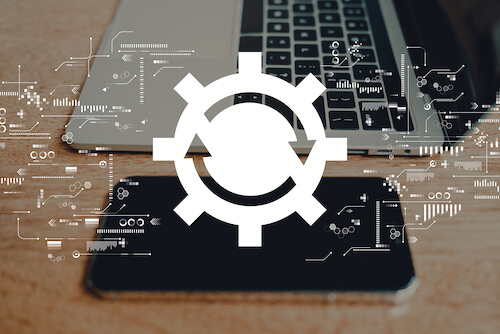What You Need To Know About Cybersecurity and eDiscovery
The rising cost and frequency of cybersecurity incidents have made companies vulnerable to data disputes, making eDiscovery partners essential for...
-3.png?width=250&height=33&name=Untitled%20design%20(18)-3.png)
Civil litigation is a common issue in the professional and business sectors. In the modern world, file management is ...
Civil litigation is a common issue in the professional and business sectors. In the modern world, file management is essential to litigation success, and every organization needs to manage electronic data compliance, regulations, and operations. For a company to manage its growing data needs with legal processes in mind, it should incorporate eDiscovery software into its operations.
What is eDiscovery software and how can it improve and streamline data management?

Discovery is a part of the preparation stage for a legal trial; it is a formal process of exchanging information between the defense and prosecution. The information exchanged during the process includes evidence and witness lists.
Paper-based discovery is no longer an efficient or cost-effective method for sharing information. Today, most of this data is in the form of electronically stored information. ESI can include everything from emails to enterprise applications to entire databases of information — video, text, audio, etc.
There was a time when law firms or companies could handle digital information and evidence in house, but with the rise of Big Data, that is no longer practical for most organizations. An eDiscovery software solution is a safe and effective way to manage the volume and variety of information legal firms and other businesses deal with.
The right software offers secure tools for the transferring of files. Cloud-based applications free up essential space for in-house servers and limit the duplication and transfer of inaccurate data.
Traditional discovery methods are costly and time-consuming. With eDiscovery, attorneys can efficiently manage documents, emails, video and audio files, web and chat downloads, voicemails, presentations, and numerous other datasets. The critical differences are the ease of transmission and more controlled and secure access to data and evidence.
The electronic process is similar to a traditional discovery process. Attorneys for either side request access to files and may challenge the legality of submitted or reviewed evidence or files. Also, during the discovery phase, each party can place potentially relevant datasets under a legal hold, preventing their destruction. If a company fails to preserve the data, they are subject to fines and sanctions.
During the collection and processing phases, a company transfers data to its legal counsel, which determines its relevance to the case. The counsel's firm will transfer the data to a review platform, converting information into PDF or TIFF files for court.
Finally, all files go through a review and production process. During the review, a law firm assesses the documents for discovery requests, determining privilege and making any necessary challenges. The production phase is when opposing counsel receives access to specific and relevant documents and files.
What is eDiscovery software in relation to this process? The simple explanation is that it's a file management platform or application. The design and purpose of eDiscovery programs are to streamline the discovery process with less demand and time delays than traditional methods.

There are two primary options for managing eDiscovery: on-premise and cloud-based. The best option depends on the capabilities of in-house servers, scalability or expansion needs, and financial obligations of the organization.
On-premise eDiscovery means ESI data remains on servers at an organization's physical address. However, while many companies feel more comfortable with data stored on-premise, it is not the most cost-effective solution. Using an on-site option requires a more significant expense than cloud-based applications because a firm must invest in the software, computers, hard drives, and servers to run the application.
The final cost includes infrastructure, such as heating and cooling systems and staff. Also, on-site installations have limitations, meaning growth or collection of data is often a concern.
Moreover, security concerns over cloud-based solutions are often overestimated. Many executives have a false sense of security with in-house systems, which are often in truth more vulnerable than professionally managed off-site solutions.
We’ve written more about on-premise versus cloud based solutions, take a look here.
Organizations often have security and compliance concerns when considering eDiscovery options. In-house management can allow for greater customization and catered security measures, but it does not permit the same flexibility and scalability as off-site cloud solutions.
For companies with hefty data management needs, hybrid solutions may offer the best of both worlds. A hybrid model combines public and private clouds, providing more security and customization over sensitive data and more efficient management of other datasets.
Choosing the correct eDiscovery software for your firm or organization is about understanding your needs and verifying software or application capabilities, including security settings. With the number of rising data breaches, security is an essential element of any tool search.

What is eDiscovery software to your firm or organization? Is it simply a file management system, or do you require top-level security and encryption? Some smaller enterprises can make do with lower-level security features in favor of off-site management, allowing a third party to incur the financial burden for infrastructure.
Ultimately, when looking for an eDiscovery solution, you want to keep a few traits in mind to ensure effortless implementation and streamlined operations. The key features of any proper eDiscovery program include:
Depending on the needs of a firm, each of these features will have varying degrees of importance. Still, robust and reliable eDiscovery platforms, software, or applications should have all of these features as standard additions.
For a list of more in-depth requirements for your firm, have a meeting to determine core features. Your company needs to evaluate the security level, customization options, and standard features it requires to determine what eDiscovery software options are suitable and which platforms or applications show the most promise.
To answer the question, what is eDiscovery software in simple terms: It is an on-site or cloud-based solution for sharing documents and data with other parties in the discovery process. When you decide to take full advantage of cloud-based eDiscovery software, Cloudficient can ensure a seamless transition to the cloud.
Contact Cloudficient to learn more about our migration plans.
The rising cost and frequency of cybersecurity incidents have made companies vulnerable to data disputes, making eDiscovery partners essential for...
What is ESI discovery? Is it different than eDiscovery? Cloudficient explains this important legal process. Learn about the role of ESI in litigation.
Gathering digital records is a critical part of a lot of processes, but eDiscovery challenges can get in the way. Learn how to overcome them.